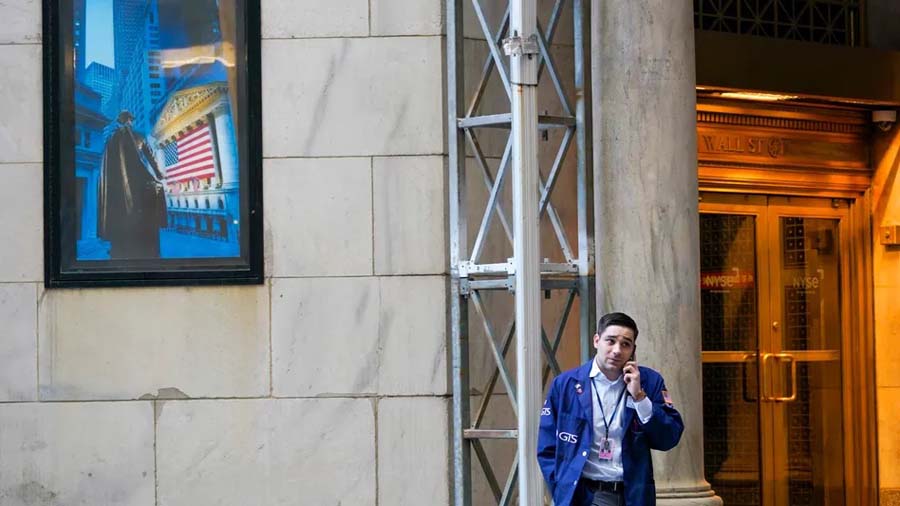DLNews Money:
By JTFMax
Interest rate hikes by central banks - led by the Fed in the U.S. - are causing chaos in bond and stock markets. The dollar is getting stronger. Everyone is looking to America and asking: Can the financial system take it?
Fourth straight ‘three-quarters of a percentage point’ The benchmark federal funds rate is now at 3.75% to 4% and is projected to rise as high as 4.5% by March 2023, according to Goldman Sachs economists. This increase will discourage borrowing and could lead to a recession in 2023. Nonetheless, some investors believe the Fed must move even faster.

How does the Federal Reserve make money?
The Federal Reserve makes money in several different ways. One of the ways is through asset purchases. It buys and sells securities to influence the money supply. Because of this, it has a large balance sheet full of securities. These securities produce interest and other payments, serving as revenue for the Fed. These funds are then sent to the United States Treasury as dividends.
Another way the Fed adds money to the economy is through open market operations. Through these operations, the Fed purchases bonds from banks. These purchases are accounted for in the System Open Market Account, which is a balance of around $4 trillion. These purchases increase the money supply of the economy and help banks lend.
The Federal Reserve is already trying to tamp down inflation and slow the economy. It has raised the federal funds rate six times already this year. Yet inflation remains high, and prices of essential goods are rising rapidly. September's average price increased 8.2% year over year. Inflation rose 0.4% from August to September.
Who is to blame for rising prices?
Many in California are unsure who to blame for the escalating prices. One woman named Nazirah Lewis said everything was becoming more expensive. As a single mother of three, she was feeling the pinch. The truth is prices are controlled by supply and demand and competition. We are to blame for spending too much, the results, corporate price-gouging, and profiteering.
A recent government report shows that prices have risen 8.6 percent this month. This is a new 40-year high. Meanwhile, the average gas price is nearing $5-6 a gallon. As a result, the Federal Reserve will be easing up on its massive bond-buying program, which has pushed interest rates below zero and fueled the economy.
The rise in prices in November is attributed to a variety of factors. Among them are supply chain problems, the coronavirus outbreak, and the Russian invasion of Ukraine. These factors have changed consumer spending patterns. In addition, rental car prices have risen due to a slump in tourism. Combined, these events have created a calamity, and policymakers have failed to recognize it.
Are Democrats Or Republicans Guilty of the Coming Inflation-Recession?
The question is, which party is more responsible for the inflationary trends we're currently experiencing? Both parties, in their own ways, are primarily responsible for the soaring costs of goods and services. Despite their differences, both sides seem to believe that the government has a role in combating price pressures. But what about the part of Congress?
Republicans have ridden on the rising anger about inflation to attack President Biden and his economic policies. They've been blaming Democrats for the fastest price increases in 40 years. They've also pledged to cut government spending, increase growth and make permanent the Republican tax cuts of 2017. These tax cuts include tax reductions for individuals and incentives for corporate investment.
As the inflation rate continues to rise, the Democratic Party cannot avoid blame. They have a fragile coalition of interest groups and the middle class and are unwilling to cut spending for "people programs." This has created a vicious political dilemma. A bout of "hyperinflation" of 20% could destroy the Democratic Party for generations.
Although there are many reasons for rising prices, the main cause is excess money. Excess money leads to an oversupply of goods, a slowed-down supply chain, and, ultimately, a spike in inflation.
Is the consumer causing inflation?
A complex interplay of factors causes inflation. While monetary and fiscal policies are often credited with being the catalyst for inflation, this is not always the case. For example, consumer spending is a significant driver of inflation. Higher wages mean higher household spending and, in turn, higher aggregate demand, which increases prices.
Inflation is also a function of supply chains. For example, some corporations and industries have increased prices to cover pandemic-related costs. This has resulted in record-high profit margins for certain companies. However, the rise in prices has come at the expense of American consumers.
The consumer-price index (CPI) measures the average price of consumer goods and services in the United States. Economists and investors use it to evaluate the economy. Increasing prices in one sector do not necessarily mean general inflation, but it does mean that consumers are spending more than they used to. This weakens their purchasing power and reduces their ability to buy goods and services.
 News Staff
News Staff![]() -
-
Business -
Great Recession
Federal Reserve Bank
Inflation
-
1.5K views -
0 Comments -
0 Likes -
0 Reviews
-
-
Business -
Great Recession
Federal Reserve Bank
Inflation
-
1.5K views -
0 Comments -
0 Likes -
0 Reviews
![]() 0
0
0
362
2
0
0
0
362
2
Share this page with your family and friends.